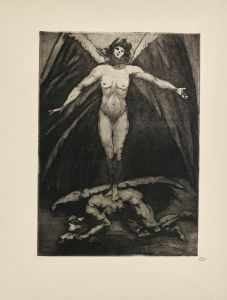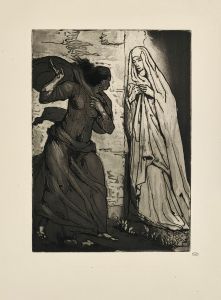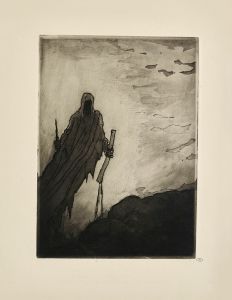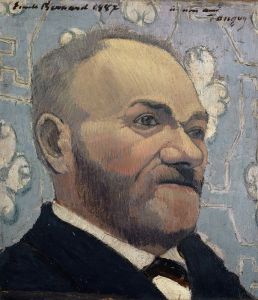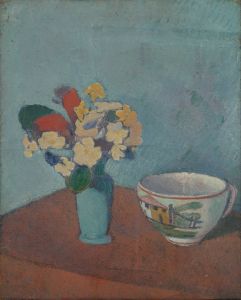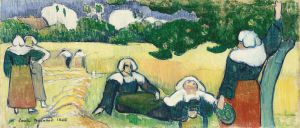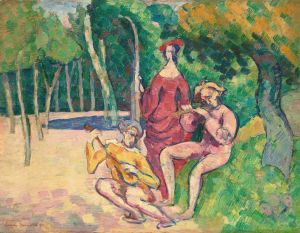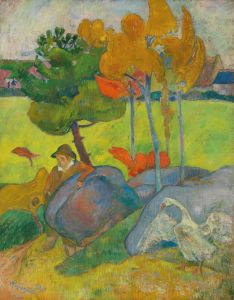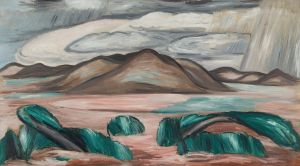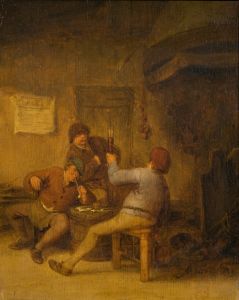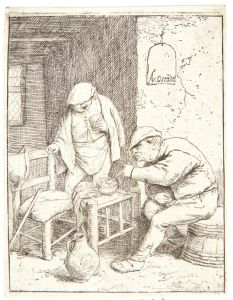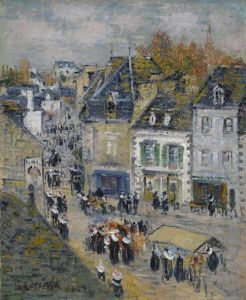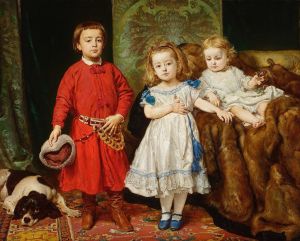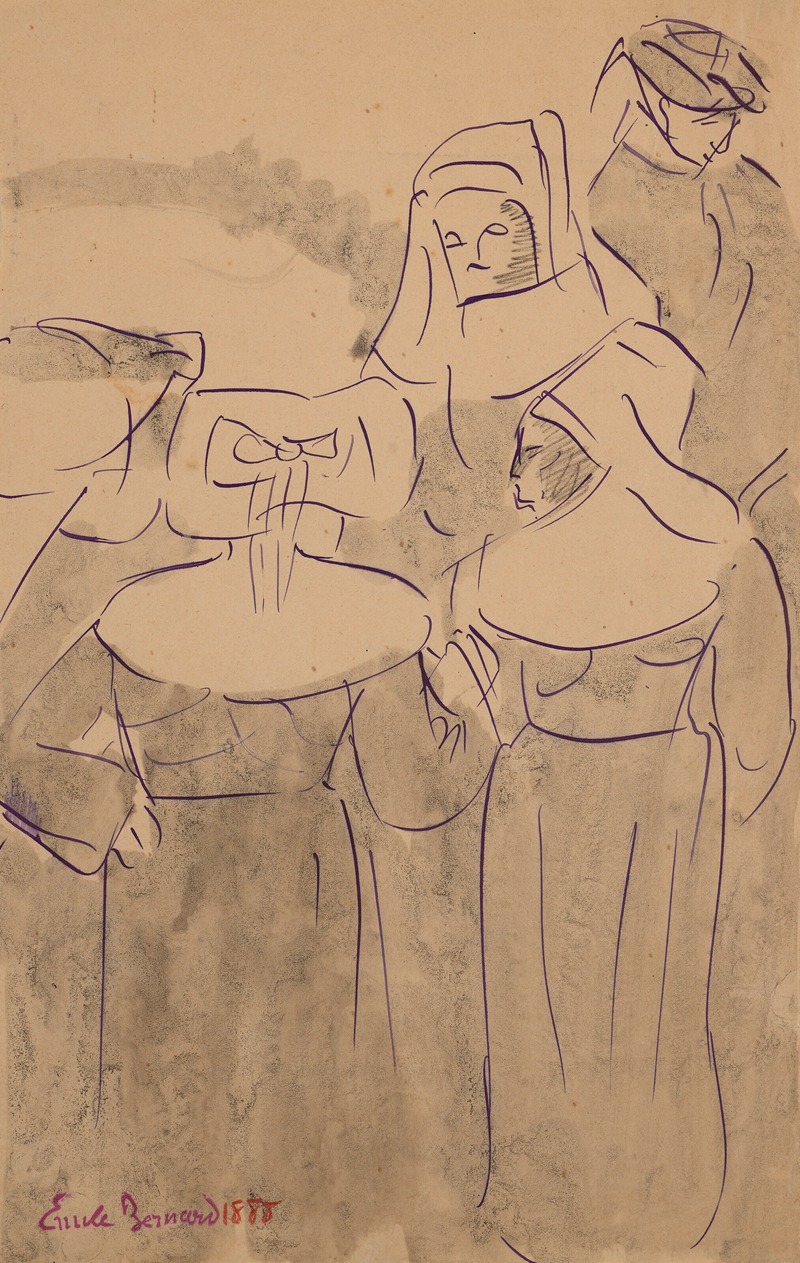
Cinq personnages bretons
A hand-painted replica of Emile Bernard’s masterpiece Cinq personnages bretons, meticulously crafted by professional artists to capture the true essence of the original. Each piece is created with museum-quality canvas and rare mineral pigments, carefully painted by experienced artists with delicate brushstrokes and rich, layered colors to perfectly recreate the texture of the original artwork. Unlike machine-printed reproductions, this hand-painted version brings the painting to life, infused with the artist’s emotions and skill in every stroke. Whether for personal collection or home decoration, it instantly elevates the artistic atmosphere of any space.
Cinq personnages bretons, translated as "Five Breton Figures," is a painting by the French artist Émile Bernard, created in 1888. Émile Bernard was an influential figure in the Post-Impressionist movement and played a significant role in the development of Symbolism and Cloisonnism, a style characterized by bold outlines and flat areas of color. Bernard's work often explored themes of rural life and spirituality, and he was deeply inspired by the landscapes and people of Brittany, a region in northwest France.
The painting depicts five Breton women, dressed in traditional regional attire, standing in a line. The figures are rendered with strong outlines and flat, vivid colors, a hallmark of the Cloisonnist style that Bernard helped pioneer. This technique was influenced by Japanese prints and medieval stained glass, which Bernard admired for their simplicity and decorative quality. The use of bold contours and simplified forms in Cinq personnages bretons reflects Bernard's interest in moving away from the naturalism of Impressionism towards a more symbolic and abstract representation.
Émile Bernard's time in Brittany was crucial to his artistic development. He first visited the region in 1886 and was captivated by its distinct culture and traditions. Brittany's rural landscapes and the simplicity of its peasant life provided a rich source of inspiration for Bernard and his contemporaries, including Paul Gauguin, with whom Bernard formed a close friendship and artistic partnership. The two artists exchanged ideas and influenced each other's work, contributing to the emergence of the Symbolist movement.
Cinq personnages bretons is notable for its emphasis on the spiritual and mystical aspects of Breton culture. The women in the painting are depicted with a sense of solemnity and introspection, suggesting a connection to the spiritual traditions of the region. Bernard's interest in spirituality and symbolism is evident in the way he portrays the figures, not as individuals but as archetypal representations of Breton identity.
The painting is also significant for its role in the broader context of the Pont-Aven School, a group of artists who gathered in the village of Pont-Aven in Brittany during the late 19th century. This group, which included artists like Gauguin, Bernard, and others, sought to break away from the conventions of academic art and explore new forms of expression. Their work laid the groundwork for future avant-garde movements, including Fauvism and Cubism.
Cinq personnages bretons exemplifies Bernard's innovative approach to composition and color. The painting's flat planes of color and rhythmic arrangement of figures create a sense of harmony and balance, reflecting Bernard's interest in the decorative arts. This approach was influential in the development of modern art, as it challenged traditional notions of perspective and representation.
Today, Cinq personnages bretons is recognized as an important work in the history of Post-Impressionism and Symbolism. It is celebrated for its bold use of color and form, as well as its exploration of cultural identity and spirituality. The painting remains a testament to Émile Bernard's artistic vision and his contribution to the evolution of modern art.





